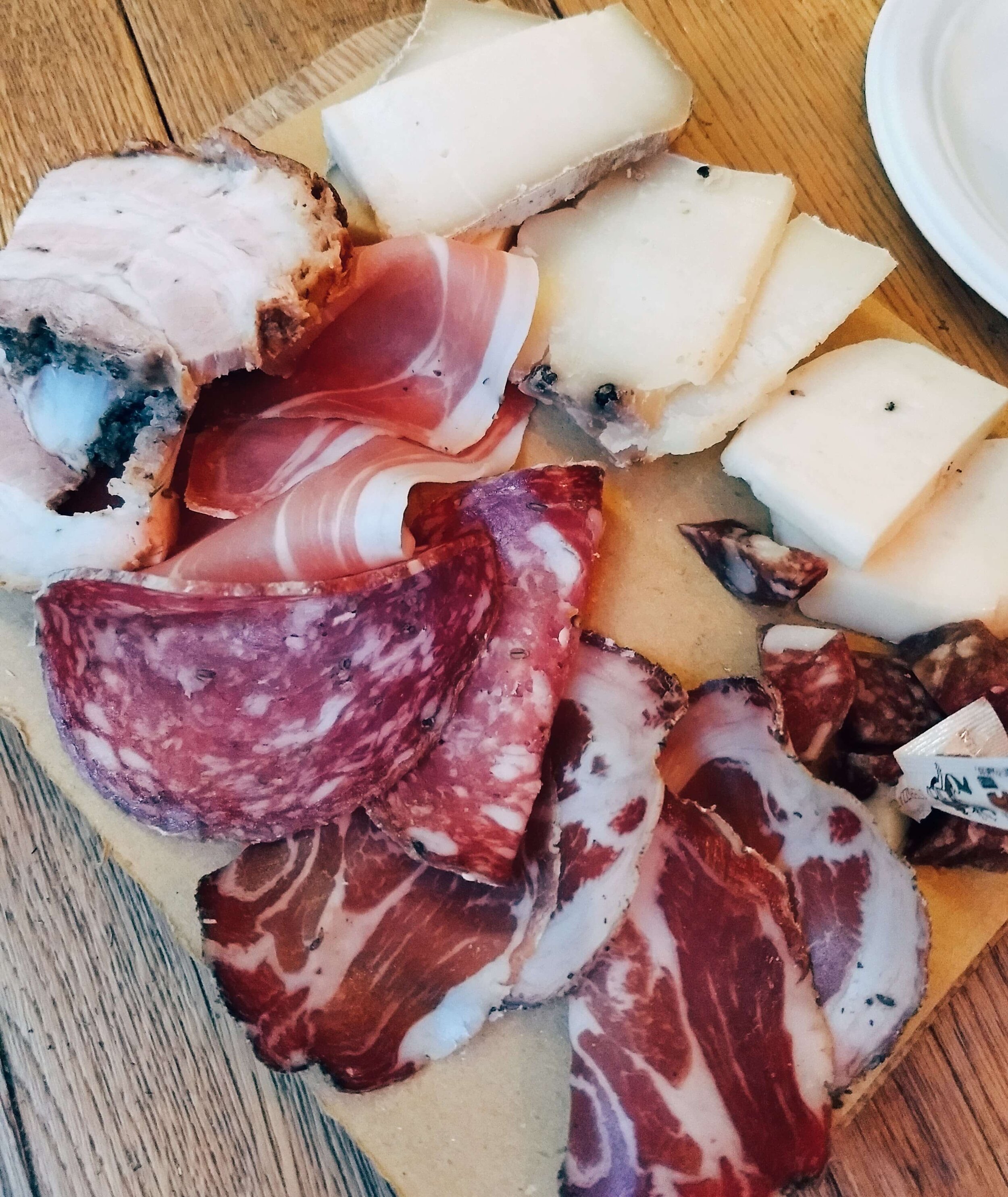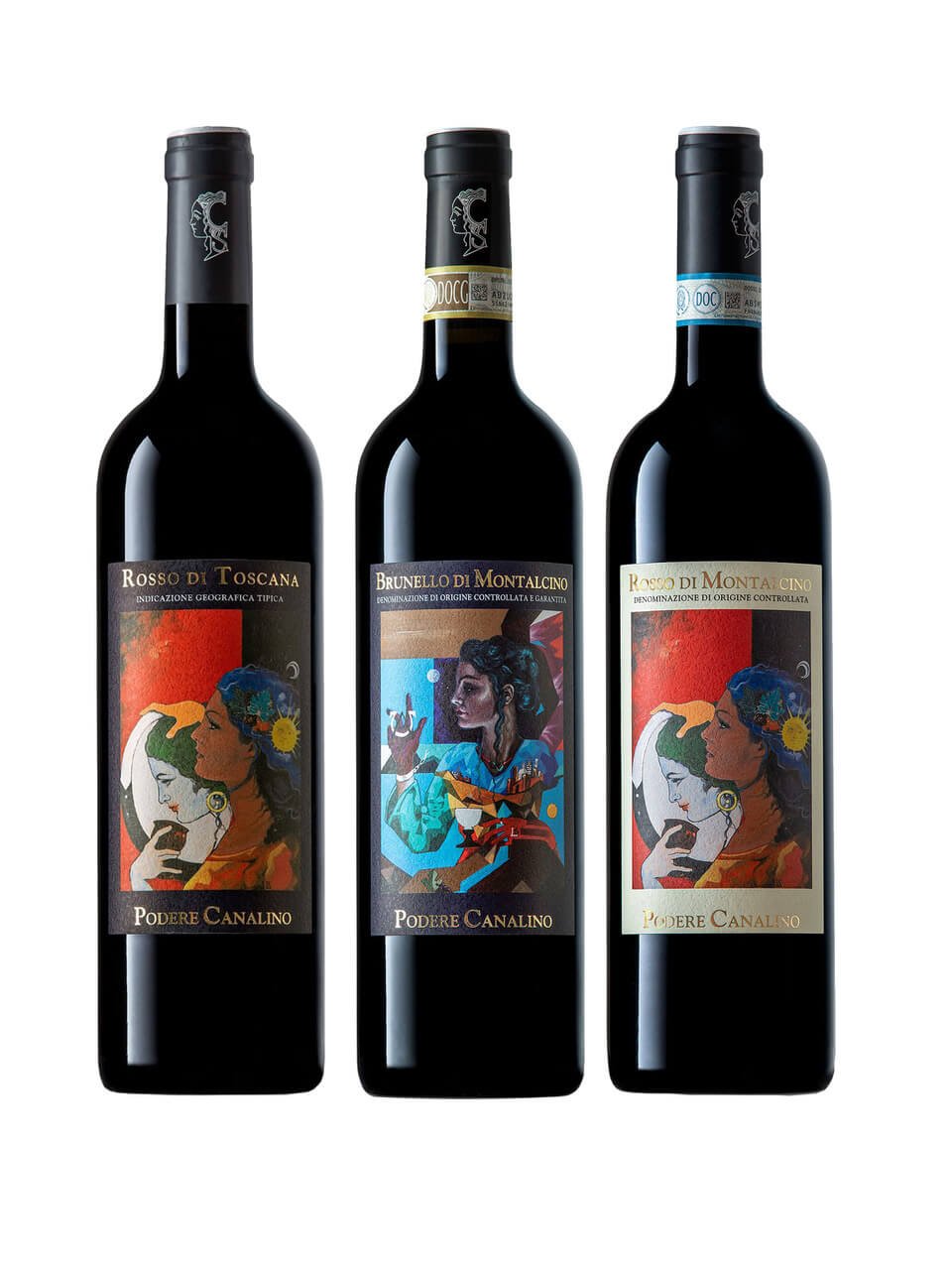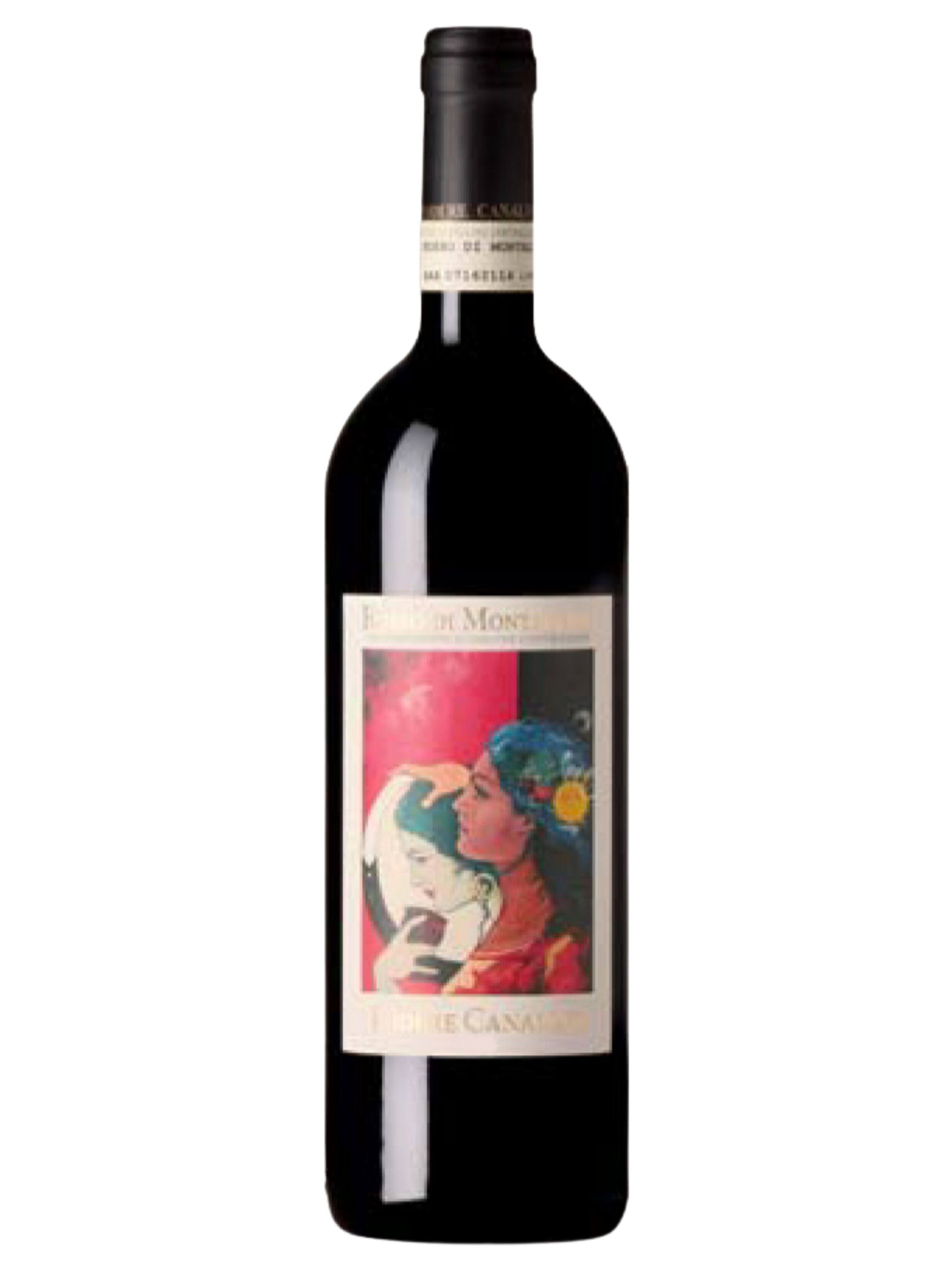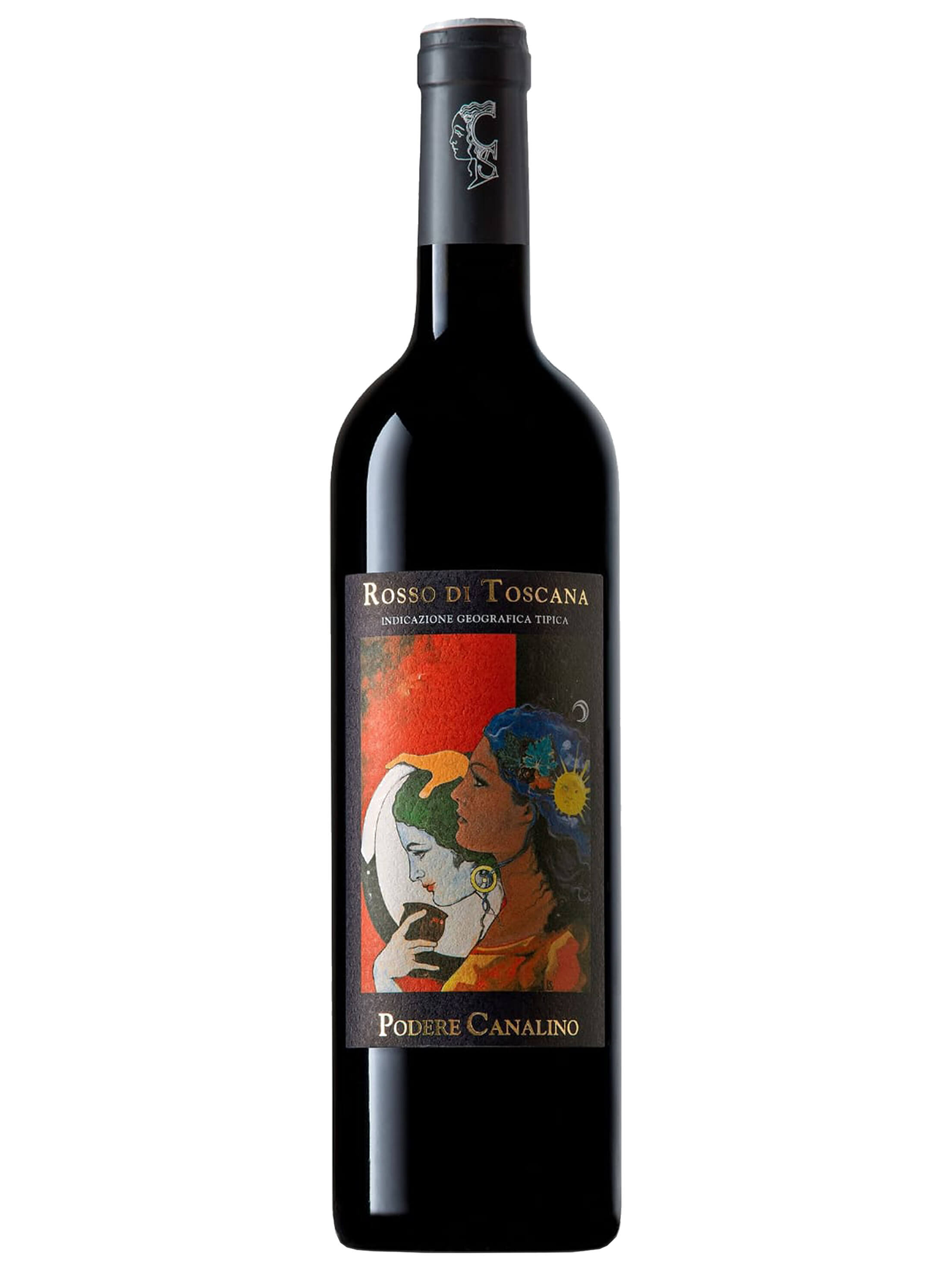The Taste of Tuscany Through Fork and Glass
In this series about Montalcino, Tuscany and its wines, we would be remiss to not talk about food. Wine in Italy came about because of its delicious and varied cuisine which is steep in traditions from place to place.
Let's take a closer look at some of the traditional foods from Tuscany and how best to pair them with the wines from Montalcino, where boutique family estate winery, Canalino, is based. Canalino’s wines are all 100% sangiovese red organic wines, specifically from the biotype sangiovese grosso, as we discussed in our previous article. Their estate is literally just outside the historic center of Montalcino, within walking distance. We carry 3 of their wines which vary in complexity, and price as well, starting with Canalino’s Rosso di Toscana then the ‘baby Brunello’ Canalino’s Rosso di Montalcino, and then finally the ‘King’ of Tuscan red wine the Brunello di Montalcino aka Brunello. In this article we will suggest pairings for all 3 of these wines and we have a recipe right from Tuscany for you to try create an authentic Tuscan meal at home.
Some Tuscan Food and Wine Pairings
Tuscany is famous within Italy for not only its wine, but the salumi, or cured meats, and cheeses.
The Rosso di Toscana is a light, easy, fruity wine perfect for kicking off a meal. It pairs excellently with cured meats, including the fennel-flavored, Tuscan salami, Finocchiona. This soft and flavorful salami has roots going back to the Etruscan times and was first invented by butchers who tried replacing the expensive and rare black pepper with fennel seeds and flowers that they found growing in their fields and hills. The recipe stuck, and today you can find Finocchiona throughout Tuscany.
In addition to cured meats, the Rosso di Toscana pairs excellently with mild, young cheeses like Pecorino di Pienza. Pecorino's name comes from the Italian word for sheep, Pecora, as the cheese is made from sheep’s milk. Although Pecorino is made in various regions in Italy, the Pecorino from Pienza is special. The sheep graze on the wild herbs that grow in the Val D'Orcia, giving the cheese its particular flavor. After the cheese is made, it's aged from two weeks to over six months. Depending on the length of the aging, it will be sold as Fresco (fresh), Semi-Stagionato (semi-aged), or Stagionato (aged). The young, fresh Pecorino pairs nicely with the Rosso di Toscana. You can also pair it with panzanella, an easy-to-make, healthy vegan salad with recipe HERE.
Moving on to the next bottle in the set, the Rosso di Montalcino, aged in large wood barrels, has more structure than the Rosso di Toscano, making it perfect to pair with the first course of your meal. The first course in Italy is most often pasta! In Tuscany, Pici pasta is king. Historically made with just water and flour and a little bit of salt and oil (nowadays, many people add egg to the recipe, but that is quite controversial amongst purists), the Pici is the quintessential Tuscan pasta. Rolled out individually by hand, each long, cylindrical-shaped noodle is unique. Their thick, slightly chewy texture is unmistakable. Pici is a prime example of the 'cucina povera' – dishes from simple, inexpensive ingredients cooked out of economic necessity. In the Val D'Orcia and the Val di Chiana, it is typical to find the Pici paired with Aglione sauce. Aglione looks like garlic on steroids but has a more delicate flavor than standard garlic. Its humungous cloves are cooked with tomato to create a delicious and unique sauce that pairs perfectly with Pici. Pici can also be paired with ragù (meat sauce) or white sauces like cacio e pepe. One word of caution, although this pasta is called Pici in most parts of Tuscany, if you come to Montalcino, they add an N to the name, and the pasta is called Pinci. Montalcinese will delight if you get the word right.
Peposo Tuscan Stew
A hearty plate of Peposo with polenta, ready to be enjoyed with a glass of Brunello.
The final wine in the set is the king of Montalcino, the Brunello . It should come as no surprise that this structured, complex wine demands an equally rich dish. It pairs well with second courses, including the classic Fiorentina steak, wild game both fur and feather, and aged cheeses including Pecorino Stagionato and Parmigiano over 30 months old. Another great dish to pair with Brunello is the Tuscan stew Peposo. Beef is braised with red wine, and as the name suggests, black pepper (pepe in Italian) and is cooked low and slow until the meat is tender. Typically served with roasted potatoes, it would also be lovely served over polenta for a hearty winter meal.
If you’re enjoying this article, then you should check out our blog which has many other interesting recipes, including another Tuscan recipe for Acqua Cotta Tuscan vegetable soup.
Go Full Immersion with Canalino from Montalcino
Meet Tuscan native, Alberto, live from his winery Canalino in Montalcino to learn more about wines from Montalcino, including Brunello.
Watch the recording of this VeroTalk HERE. We tasted all three of Canalino’s wines, bundled together in this limited time promotion Explore Montalcino Set, with free shipping.
The Explore Montalcino Wine Tasting Set allows you to not only get to know the wines from Canalino Winery in Montalcino, but it sets you up for an epic dinner party!
Why?
The three wines in the tasting set pair perfectly with the three courses of a typical Italian meal: l'antipasto (appetizer), il primo (first course), and il secondo (the second course)!
Buon appetito and don't forget to tag @verovinogusto and show us what you are pairing with your Vero wines!
This article is written by Alex Smookler, founder and owner of Alex Smookler Travel, a Travel Design Company, who lives in Montalcino and moderated our VeroTalk you can watch with Alberto of Canalino Estate winery.
Peposo – Tuscan Red Wine Beef Stew
Cooking and Prep Time: 2-3 hours
Portions: 4 servings
Ingredients:
2-3 lbs of Beef Chuck Roast, in stew chunks
5 cloves Garlic, chopped
1 tablespoons Black Pepper, ground
500ml Red Wine of choice
1 cup Beef Broth (if necessary)
Salt and Oil
On the Side:
Oven Roasted Potatoes
Mashed Potatoes
Creamy Polenta or Grits
Suggested Wine Pairings:
Canalino | Brunello di Montalcino
Procedure:
1. Begin by lightly browning the beef chunks in a little olive oil. Once browned, remove from the pan, and gently begin to cook the chopped garlic in the drippings. Once softened, add back the beef and stir well.
2. Season with the pepper and some salt and add the wine. Cover and keep over low heat, stirring occasionally for at least 2 hours. If it starts to get dry, add a little broth for liquid. When the meat is fork-tender the Peposo is ready to serve!
3. Serve your Peposo with something starchy to help soak up all that delicious sauce. Oven roasted potatoes are a fan favorite, but also mashed potatoes are great, too. For a more North-Italian flair, serve it over a soft and creamy polenta (or grits). And don’t forget to pour yourself a glass of Brunello di Montalcino to enjoy alongside!






